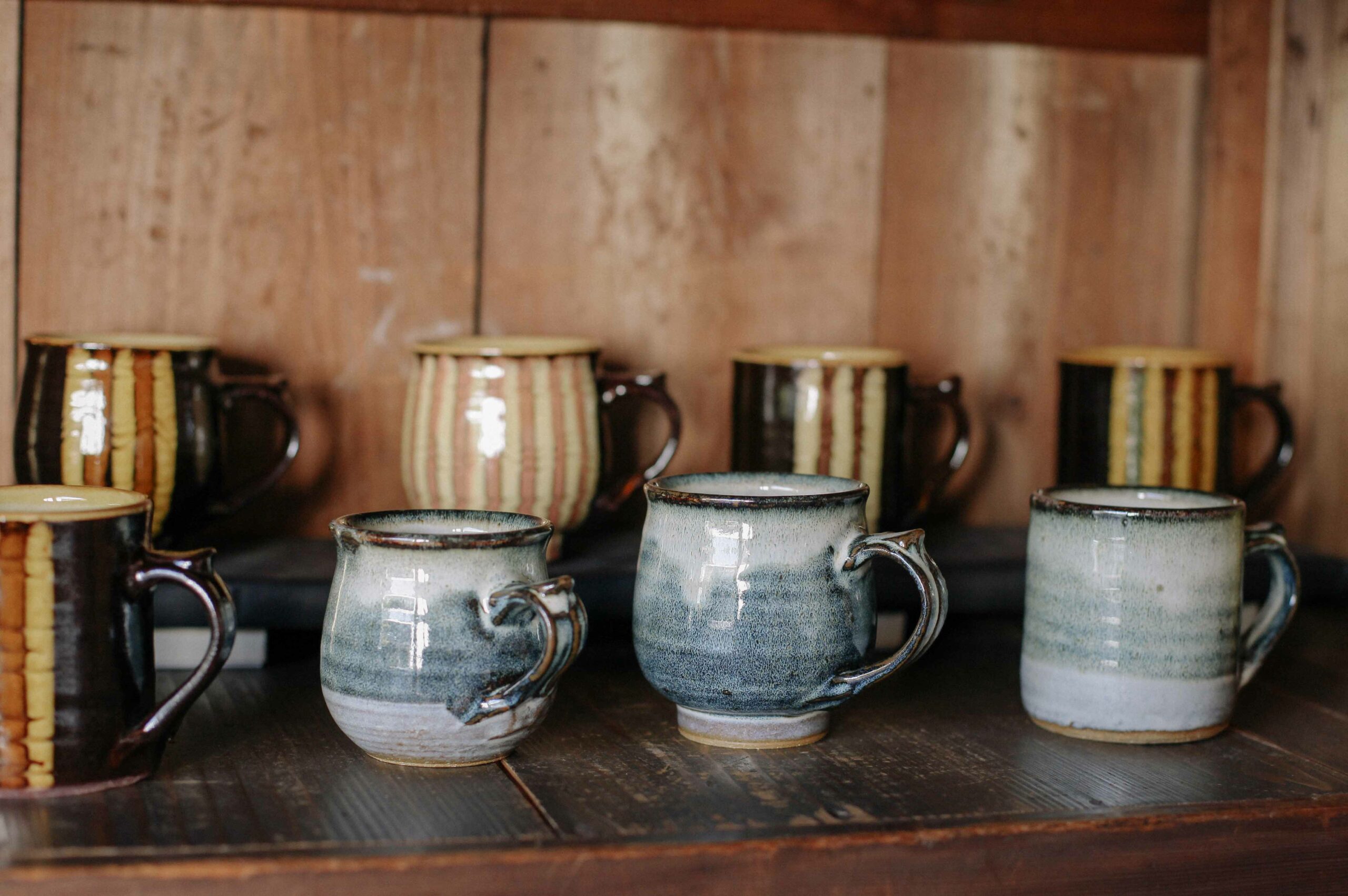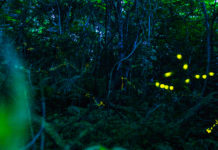The Japan Folk Crafts Museum in Osaka (usually referred to as ‘Osaka Mingeikan’) is easy to overlook. It’s not marketed at foreign visitors, and the Osaka prefectural city of Senri-chuo isn’t a tourist hotspot. However, the museum is easy to reach, set in rolling parkland, and is only two minutes away from the Osaka Museum of Ethnology. ‘Folk crafts’ (referred to as ‘Mingei’ in Japan) may not be on everyone’s radar, but once you’ve visited Japan, the importance of heritage crafts and the beauty of everyday things become obvious. Japan is home not only to world-class artisans, but to practitioners of a simpler kind of making.
The term ‘Mingei’ (folk crafts) was officially coined in the mid-1920s by philosopher and art critic Yanagi Sо̄etsu. Along with Kawai Kanjirо̄ and Hamada Shо̄ji (both of whom were ceramicists), Yanagi created Mingei as a makers’ movement, at around the same time that Britain’s Arts and Crafts movement was gathering pace. In Britain, as well as Japan, a type of ‘post-industrial fatigue’ was motivating makers and craftspeople to protect and transmit ways of making which were at risk of being lost to machines.


For lovers of all things handmade, rustic, and earnest in spirit, the philosophy and physical artefacts of the Mingei movement will feel electrifying. Handmade wares, teamed with the Japanese affinity for natural materials and appreciation for subtlety, combine to create something that seems bigger than the sum of its parts. Mingei could even be seen to be a way of life, with its core philosophy of tactile simplicity and rejection of faceless mass production a necessary foil to modern life.
Most visitors to Japan will have the opportunity to visit Tokyo and Kyoto, the country’s most popular tourist destinations. Anyone wishing to experience Mingei for the first time should visit The Japan Folk Crafts Museum in Tokyo, and Kawai Kanjirо̄’s home-turned-museum in Kyoto. While there’s plenty of opportunity to learn about Japanese folk crafts from books or online resources, it’s the atmosphere of these spaces, in which items are crafted and displayed, that offers the most enriching experience.

What luck, then, that Osaka also has a spectacular Mingei museum! It’s a sprawling space, set over two storeys and across multiple long, low-ceilinged exhibition halls, with two major exhibitions every year in spring and autumn. The museum’s displays are completely renewed during these exhibitions, and only one room is reserved for a permanent collection, so each season brings an entirely new experience.
What does remain constant, however, is the museum’s shop. Museum shops in Japan are in an entirely different class to their western counterparts, and the shop at the Osaka Mingeikan is no exception. If you’re confident in your suitcase-packing skills or don’t mind paying to send items to your home country via Japan Post’s EMS service, this is the place to stock up on unique folk crafts which won’t be found outside of Japan.
The shop has lovingly curated collections of folk crafts from regions across Japan. They sell Tamba-ware from nearby Kobe, artisanal mulberry paper from Shimane prefecture, and hand-woven rush mats from Okayama. They also have a comprehensive collection of the monthly Mingei magazine, which also cannot be purchased outside of Japan, and is a rare find even within the country. While the magazine is written in Japanese, it’s worth purchasing a few copies for the pictures alone.


If you can tear yourself away from the museum shop, the exhibitions are also fantastic opportunities to deep-dive into the individual types of crafts which exist within the Mingei movement. This article was written after visiting the museum in December 2023, during which time an exhibition of ‘bashо̄-fu’ (banana leaf fibre textiles) was on display. The information cards within the museum itself are only written in Japanese, but the museum always provides English language pamphlets which offer ample background information, and the translation of exhibition title cards.
Banana leaf fibre textiles are an artisanal product of Okinawa, and originate from a time when the islands were still the independent Kingdom of Ryūkyū. The fibres are made from the leaves of Musa liukiuensis, a type of wild banana that originates from the Ryūkyū archipelago. In the decades leading up to World War II, the art of bashо̄-fu was in decline. The war itself took a heavy toll on the people of Okinawa and the land’s resources, and for a time, bashо̄-fu ceased to exist.

Today, bashо̄-fu weaving still exists in artisanal form, owing to a dedicated group of weavers resurrecting the craft after the war. Having been revived in the city of Kurashiki, in Okayama, the practice was returned to Okinawa, and the majority of bashо̄-fu crafts are now made in the village of Kijoka. The labour-intensive nature of the craft, along with the ageing of its most capable artisans, once again poses the threat of the craft’s decline. However, concerted efforts are being made to train new generations of bashо̄-fu weavers, in order to keep this unique piece of Okinawa’s cultural heritage alive.
At a time when natural resources are being exploited beyond sustainable levels, bashо̄-fu could provide a vital solution. Banana ‘trees’ are, counter-intuitively, not trees at all. They are technically a type of gigantic herb, which die off completely at the end of their annual growing and fruiting season. Their enormous leaves can easily be harvested before wilting, and processed into a flexible, durable cloth, which is fully organic. Unlike cotton, they provide both a globally important food and a means of creating textiles without the need for pesticides. Bashо̄-fu is also an ideal textile for hot, humid climates, as the fibres don’t cling to the skin, like other types of fabric. Bashо̄-fu, although a niche type of craft, may offer one solution to a crisis of sustainability in manufacturing; confirming that the ‘Mingei’ way of making still has much to offer the modern world.


Osaka Mingeikan’s halls are warmly lit and low-ceilinged, creating a relaxed and comforting atmosphere. The attention to detail is superb, with even the wallpaper and curtains themselves being handmade folk crafts, rich in texture and colour. When leaving the thematic exhibition rooms, you’ll have a chance to step into a hallway housing a small collection of ceramics, including dishes and vessels crafted by Kawai Kanjirо̄ and Hamada Shо̄ji. Hamada himself was the first director and chief curator of the Osaka Mingeikan, and was eventually succeeded by Yanagi Sо̄etsu’s son, Yanagi Sori.
From here, walking along a small corridor-bridge leads you to the modest ‘permanent collection’ room, whose contents are rotated throughout the year. They range from tiny, handcrafted toys, to wall tapestries which span two storeys. Both the thematic and permanent displays at the museum help to attune the eye to Japan’s idiosyncratic design sensibilities. When you spend time in Tokyo or Osaka’s folk craft museums, or absorbing the atmosphere of Kawai Kanjirо̄’s comforting Kyoto home, it becomes easier to notice the ways that Mingei still serves as Japan’s dominant design philosophy. Suddenly, you’re better able to appreciate the organic form of a chawan tea bowl or the complex design of the joinery that makes a temple roof. The world of made objects feels all the more alive when you’re able to appreciate the beauty of everyday things.

Access:
From Kyoto Kawaramachi train station: Ride the Hankyu line to Minami Ibaraki Station, requiring either one change or no changes. Exit Hankyu Minami Ibaraki station and walk to the clearly signposted Osaka Monorail station. Ride the Monorail from Minami Ibaraki station, two stops to Banpaku Kinen Koen. Exit, bear left, walk over the bridge to the entrance to Banpaku Park.
At the large entry gates, use the ticket machine to buy a ticket for ‘Osaka Mingeikan’ [大阪民芸館] – there is also a manned ticket window, and staff can help you if needed. Head through the gate and follow the local map to the entrance of the museum. It’s a large black building, with a very long and low profile. This route may be useful.
Name: The Japan Folk Crafts Museum, Osaka [Osaka Mingeikan]
Address: 10-5 Senribanpakukoen, Suita, Osaka 565-0826, Japan
Open: 10:00am – 5:00pm (last entry 4:30pm). Closed on Wednesdays and during exhibition installations.
Admission: ¥710
Website: https://www.mingeikan-osaka.or.jp/en/info/
















